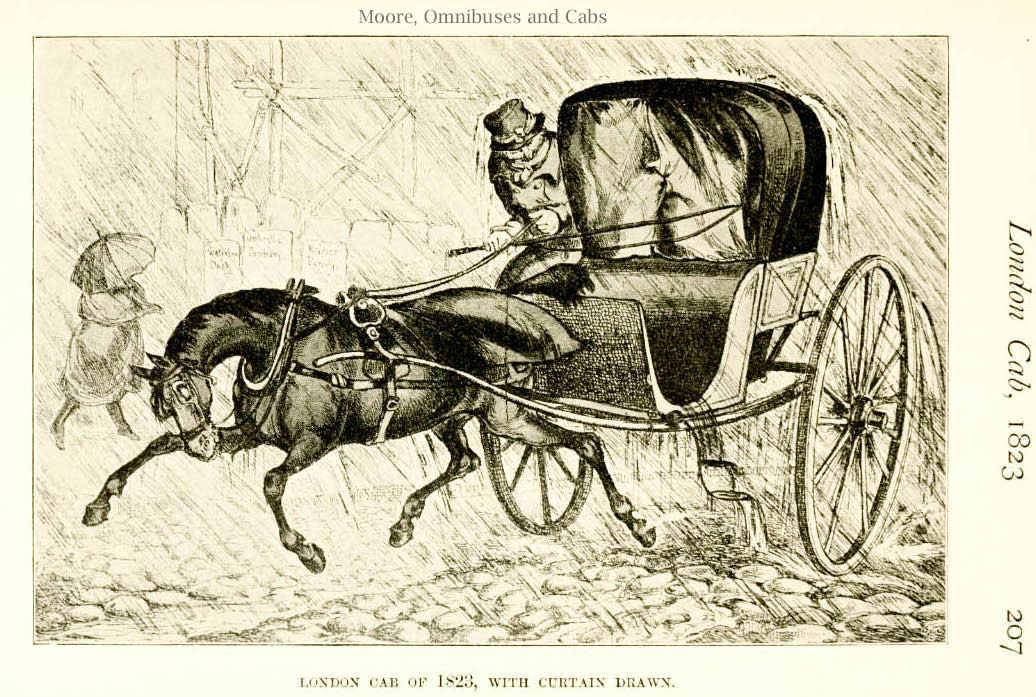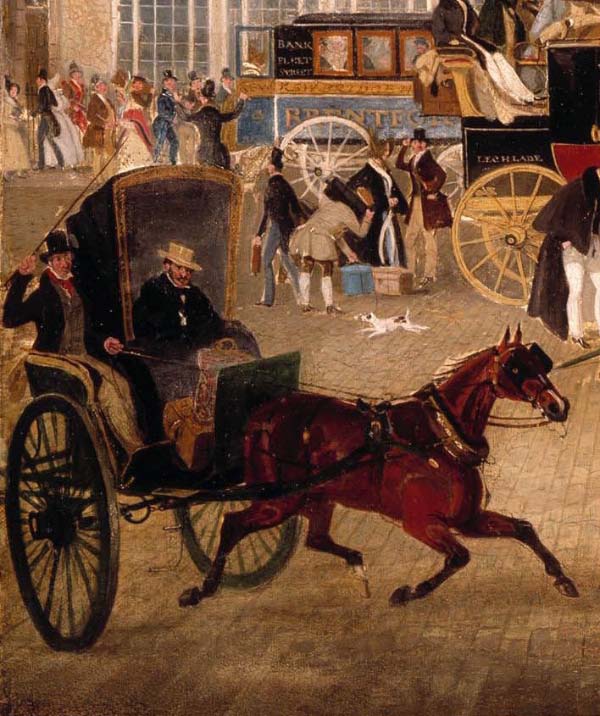Print depicting Mr Ducrow and Miss Woolford in their circus duet as the ‘Tyrolean Sheppard [sic] and Swiss Milkmaid’ as performed at Astley's Theatre (print published 26 July 1831). © Victoria and Albert Museum, London.
“In ‘The Tyrolean Shepherd and Swiss Milkmaid,’ for example, [Ducrow] was joined by his wife, Louisa Woolford; while standing on the backs of their circling horses, the two performed the pursuit and wooing of a ‘fair peasant,’ complete with a lovers’ quarrel and reconciliation scene, followed by an exquisite pas de deux.” —Britannica
An article about equestriennes that I shared some months ago on Facebook reminded me of one of my favorite early 19th century London locales, Astley’s Amphitheatre, and its equestrienne star, Louisa Woolford. Since she wasn’t a Belle Epoque figure—she was born about 1815, in the Regency era—she didn’t get much attention in the Paris Review piece on equestriennes. Or elsewhere.
Miss Woolford makes a brief appearance in Dickens’s Sketches by Boz, in the piece, “Astley’s.” Not enough about her, but a fine and funny verbal picture of the place, worth reading, I think.
She was the most famous circus performer of the time—but information about her is scarce. Here’s what I’ve pieced together, with the aid of a descendant.
Louisa was the seventh of nine children, one of two born in Ireland (the others were born in England). Her father was a horse breeder and trainer who worked with the famous equestrian circus performer Andrew Ducrow, of Astley’s fame, and she began performing at Astley’s at an early age.
According to a quote from an Andrew Ducrow obituary in a London Dead Blog post: “ ... Miss Woolford ... before she became Mrs Ducrow was for a long time the chief attraction of his theatre, and drew crowds by the accustomed gracefulness of her action, and the skilful management of her steed. The deceased has two children* by her. Miss Woolford was very early a debutante at Astley’s, and many theatrical people of about thirty years standing will remember her at the Amphitheatre under Astley’s management as a little girl with a long crop, and of intelligent and pretty manners. She had two brothers also at the same time with her on the stage, who have since died in America; she bears an amiable and good character; her age is about twenty seven, and she had been married to Mr Ducrow about four years.”
The trouble is, she tends to take second place to her famous husband. She put him in first place as well, with an extravagant epitaph on his magnificently over-the-top mausoleum in London’s Kensal Green Cemetery. I took a detailed look when I visited London a few years ago. On one side of the tomb is the epitaph Louisa wrote, which you can read in full in my blog post at Two Nerdy History Girls.
His funeral, as described in The Gentleman’s Magazine, was in keeping with the grand tomb.
We learn from the Gentleman’s Magazine obituary that Louisa is pregnant (with their third child): “The situation of Mrs. Ducrow renders it probable that her accouchement will take place in June. It is understood to be her intention not to resume her professional exertions.” This pregnancy produced the son who earned his own blog post on the London Dead blog.
Had she resumed her professional exertions, it’s possible that her fame would have equaled her first husband’s. But she married again, about two years after Ducrow’s demise, a gentleman named John Hay. He died in 1873, and she lived on comfortably it seems, having two live-in servants as of the census of 1891. She died at Paddington, London, on 25 January 1900, leaving her daughter something over £ 700.
For the information about her life after Ducrow and for most of the images here I am indebted to Eden Pelletier, a descendant, who got in touch with me after reading my 2NHG blog post about Andrew Ducrow’s mausoleum.
We have not yet found Louisa’s burial place, and we continue to search for further information. For now, she seems to be one of those women who, after the early years of fame, “lived faithfully a hidden life, and rest in unvisited tombs,” as George Eliot said of Dorothea in Middlemarch.
*Peter Andrew and Louisa.






